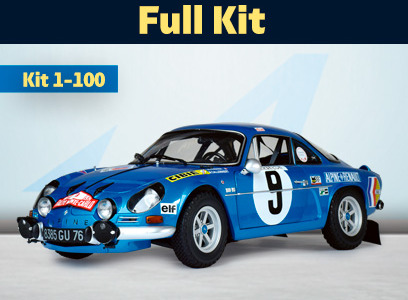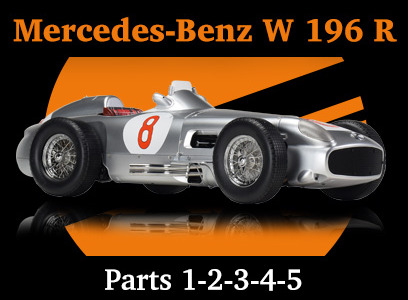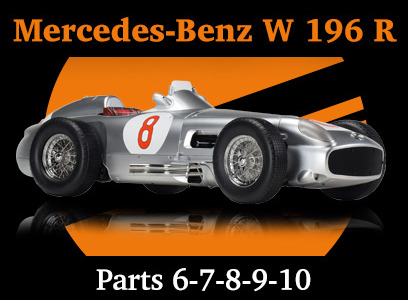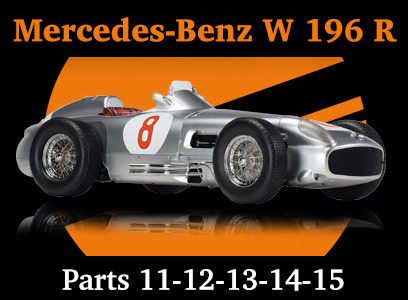-
MenuBack
-
IXO BOX
-
-
24h00 Le Mans
-
Alpine A110 1600S
-
Lancia 037
-
-
-
FULL KIT
-
-
FULL KIT
-
-
- ACCESSORIES
- MAQMADON by Ixo Collections
-
ASSEMBLY GUIDES
-
Undefined title
-
-
-
Blog Ixo
-
- FAQ
Renault 5 Turbo
Renault 5 Turbo
Born under the star sign of racing
Just six years after the launch of the popular little hatchback Renault 5, a turbocharged version for racing was presented at the 1978 Paris Motor Show.

With the retirement of the " Wizard " Amédée Gordini, it was now up to Alpine, which had become part of Renault in 1971, to resume racing and to enhance some of the Renault’s models. To achieve series production of the Renault 5 Turbo project 822, in a restricted time frame and with a reduced budget, remains a real technological and industrial exploit. Especially when the ambition for this car is to win World Championship rallies.
The expertise of Alpine
Two years passed from the initial project envisaged by Jean Terramorsi, the Director of Renault Gordini, to the presentation of the first (non-running) prototype at the Paris Motor Show in October 1978, during which period several people played a decisive role. Starting with engineer Michel Têtu who was responsible for the successful execution of the Renault 822 project at Renault Sport, at that time based in Dieppe and managed by Gérard Larrousse who had succeeded Jean Terramorsi in 1976. The development was realised within the design office that was about to become the famous BÉREX (Bureau d'Études et de Recherches Exploratoires). The "in-house" test drivers, like Alain Serpaggi, Jean Ragnotti and Guy Fréquelin, were responsible for taking the Renault 5 Turbo from the experimental prototype phase to series production. This became reality on 20 May 1980, the day that production officially started in the Alpine factory in Dieppe on Avenue de Bréauté.
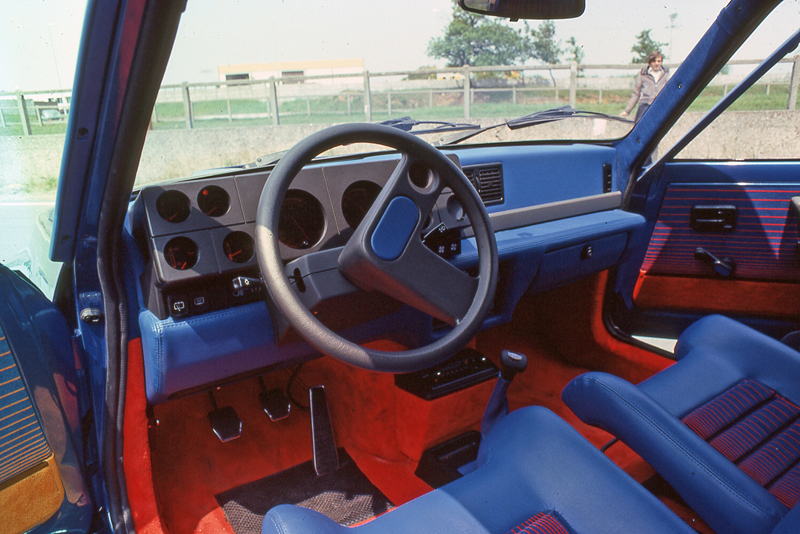
The Renault 5 Turbo's interior, designed by the Italian stylist Bertone, is particularly unique and modern for its time. © IXO Collections SAS - Tous droits réservés. Crédits photo © Renault D.R. / Archives et Collections
Modified chassis for serial production
Initially, the body of the R5 Turbo was taken from the production model. A few units were taken from the assembly line of the Renault 5 2-door version at Flins, along with additional bodywork components. These chassis, made of bare steel sheet, were then sent to the Heuliez factory in Cerizay near Nantes, where the assembly and transformation of the bodies were subcontracted. Heuliez was responsible for the rear wheel arches, the engine compartment and the front boot, but also for extending the body and modifying the rear bumper. The company was also responsible for manufacturing all the parts specific to the R5 Turbo that were not supplied by Renault, such as doors, the rear hatch and the roof, which were made of pressed aluminium. After a protective coat of black paint, the chassis were shipped to Alpine in Dieppe. To be able to quickly produce the 400 cars for the race homologation, Alpine had temporarily stopped the assembly of the A 310 Coupes.

The first generation of the Renault 5 Turbo was only available in two body colours : Pomegranate Red or Olympus Blue. © IXO Collections SAS - Tous droits réservés. Crédits photo © Renault D.R. / Archives et Collections
Assembly in Dieppe
Heuliez body shells received an anti-corrosion treatment and were then placed on the assembly line where the locally manufactured laminated polyester body parts were mounted, primarily the wings and front bonnet. Then a reinforcement tube was installed in the front of the old engine compartment. The chassis was then painted before actual assembly began, involving some twenty stages with the installation of electrical equipment and wiring, followed by the engine and transmission, and finally the mechanical components (brakes, suspension, steering). The assembly process ends with the installation of the passenger compartment, outdoor accessories and windows. Once completed, the car is taken for a test drive in the surrounding countryside before being delivered to a Renault dealer to be purchased by a proud owner...

Profile of the Renault 5 Turbo in its first race in October 1979, at the 7th Tour of Italy, in which Guy Fréquelin and Jean-Marc Andrié dropped out. © IXO Collections SAS - Tous droits réservés. Crédits photo © Renault D.R.
The Renault Turbo 4-cylinder engine
The Renault Turbo type 840-30 engines, with four in-line cylinders of 1,397 cm3, were assembled in a dedicated workshop called 49.83 located within the Boulogne-Billancourt factory. The engine was placed in the centre of the car and had a cast iron block and an aluminium alloy cylinder head. It is derived from the 1.4 litre engine of the standard R5 Alpine, which the Bérex engineers increased from 93 bhp to 160 bhp by adding a Garrett turbocharger (0.85 bar of intake pressure) combined with a Bosch injection. The significant increase in temperature (over 400°) of the engine transmission due to the compression of the intake gases and the limited engine area, required the use of an air-to-air exchanger to cool the gases at the turbo outlet. This system is effective, but extremely complex and time-consuming to develop. The 1983 Turbo 2 version kept the same displacement and offered the same maximum power and torque (21.4 mkg at 3250 rpm), while the weight was reduced by 70 kg. The Maxi 5 Turbo with 1,525 cm3 and 350 bhp at 6,500 rpm was introduced in 1985.
For more information...
An international showcase
Less than a year after the launch of the Renault 5 Turbo, a monotype championship was dedicated to it. During four seasons, from 1981 to 1984, the Renault 5 Turbo European Cup helped to establish the reputation of this exceptional car. From the very first year, the R5 Turbo Cup was driven on the most prestigious European circuits as the opening race of a number of Formula 1 Grands Prix, bringing it a worldwide media audience. In its first season, the Cup included 12 events, with seven of them opening a F1 Grand Prix and one as a warm-up for the 24 Hours of Le Mans. The winners of the first four seasons were : Wolfgang Schütz (Germany) in 1981, Joël Gouhier (France) in 1982, then Jan Lammers (Holland) in 1983 and 1984. The Alpine V6 Turbo took over from 1985 until 1988 with the "Europa Cup Renault Elf" championship.

The factory driver Jean Ragnotti was a regular host of the Renault 5 Turbo European Cup where he finished 2nd in 1982. © IXO Collections SAS - Tous droits réservés. Crédits photo © Renault D.R. / Archives et Collections
Jean Terramorsi
Born in 1922, the man considered to be the father of the Renault 5 Turbo began his career in communications, at Publicis in 1948, where he was soon put in charge of advertising for Renault. He had a close relationship with the Renault brand and in 1963 became Director of Publicity for the company. From 1972, he was responsible for Renault's small series production and competition department, as well as President of Renault-Gordini. Despite his great involvement with the introduction of the Turbo in racing at Renault, he was replaced by Gérard Larrousse at the end of 1975. The story goes that early in 1976, Jean Terramorsi and his assistant Henry Lherm, on their way back to Paris after a meeting at Alpine in Dieppe, fantasized about a small sports car based on the Renault 5 that would be equipped with a central turbo engine and rear-wheel drive... Unfortunately, "Terra" would never see this project come to fruition, as he died of a heart attack the following 27 August.
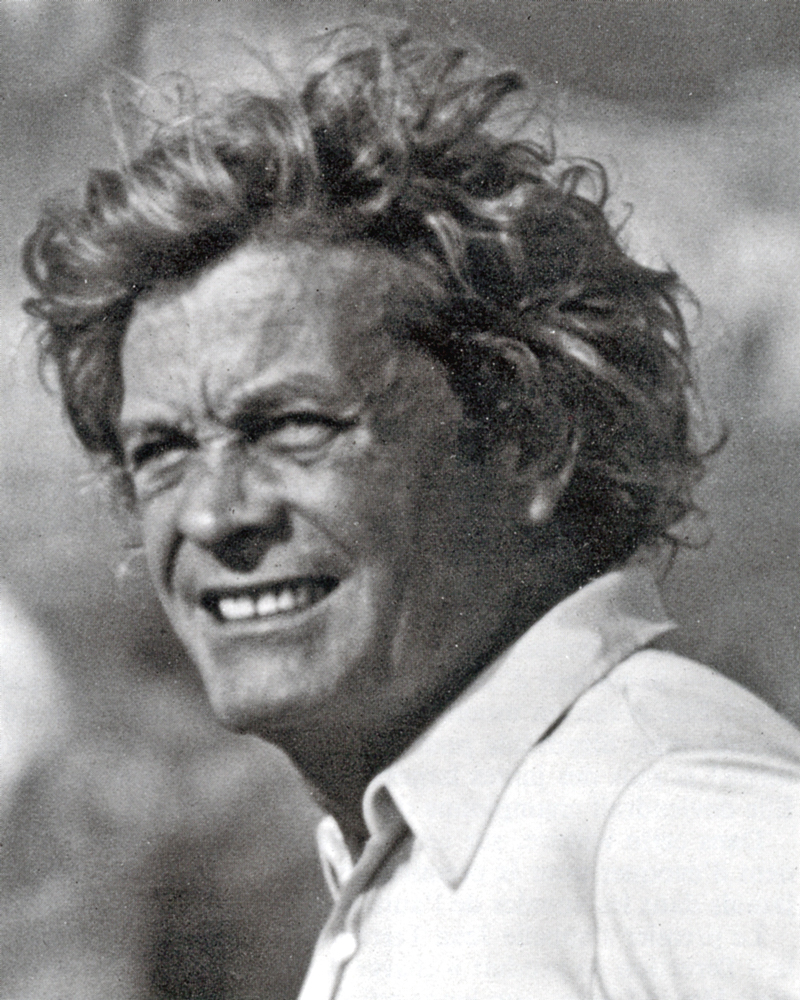
Jean Terramorsi was an outstanding communicator and played a major role in the Renault Racing Department in the early 1970s. © IXO Collections SAS - Tous droits réservés. Crédits photo © Renault D.R. / Archives et Collections
Super Production Champion
In 1987, a new version of the Renault 5 Maxi Turbo was specially developed for the French Super Production Championship, brilliantly won by Erik Comas with Jean-Louis Bousquet (ranked 5th), the two team members taking 6 victories in total. This car, manufactured in a limited edition of 6 cars and prepared by Sonica, included several modifications compared to the basic 5 Maxi. It weighed 1,060 kg, the wheelbase remained unchanged, but the front and rear tracks were increased to 137 cm and 153 cm respectively. The engine was reduced to 1,419 cc and now developed 370 hp at 6,700 rpm with a maximum torque of 45 mkg at 5,000 rpm. 5,000 rpm. Unlike the basic model, the Super Production Maxi was intended to be used exclusively on the track..

The Renault 5 Maxi Turbo in which Erik Comas won the French Super Production Championship in 1987. © IXO Collections SAS - Tous droits réservés. Crédits photo © Renault D.R. / Archives et Collections
Production numbers
In order to obtain its Group 4 (Grand Touring) sports homologation, the Renault 5 Turbo needed to be built in 400 units within a year. By the end of 1980, this objective was largely achieved, as after only six months of production, 804 cars already left the Alpine factory in Dieppe. Official figures from Tombée de Chaîne Mécanique (TCM) prove that 4,762 Renault 5 Turbo were produced from 1980 to 1986, of which 3,084 Turbo 2 from 1982 to 1986. In addition, 200 Turbo 2 Type 8221 were built in 1984 for Group B homologation, as well as the "Cévennes" customer competition version of 1981 (20 copies) and the "Tour de Corse" of 1982 (20 copies). As for the Maxi 5 Turbo, 20 models were built between 1985 and 1986, making a total of 5,022 vehicles produced, all versions included.

For six years, the Renault 5 Turbo was a remarkable addition to a highly diverse R5 range that was launched in 1972. © IXO Collections SAS - Tous droits réservés. Crédits photo © Renault D.R. / Archives et Collections

Racing successes
The Renault 5 Turbo's main achievement was in rallying, where it paved the way for a whole generation of cars in Group B. Its fabulous career began with the challenging Tour de Corse in 1980, where Jean Ragnotti came close to achieving a win after a breathtaking recovery. That day, he demonstrated the formidable potential of this little car, which subsequently won four events in the World Rally Championship: Monte Carlo 1981 (Ragnotti), Tour of Corsica 1982 and 1985 (Ragnotti) and Rally of Portugal 1986 (Joakim Moutinho on Maxi Turbo). In addition, the Renault 5 Turbo won more than thirty European Rally Championships and the French Rally Championship in 1981 (Bruno Saby), 1982 (Jean-Luc Thérier) and 1984 (Jean Ragnotti).
Renault 5 Turbo (Type R 8020 from 1981)
• Engine: type 840-30 turbo, 4 cylinders in line, central rear longitudinal
• Displacement: 1,397 cm3
• Bore x stroke: 76 mm x 77 mm
• Power: 160 hp at 6,000 rpm
• Fuel supply: Bosch K-Jetronic mechanical injection and Garrett T3 turbo
• Ignition: Marelli transistorized
• Timing: side camshaft, 4 overhead valves per cylinder
• Transmission: Type 369-04, rear wheels, 5-speed gearbox + M.A.
• Tyres: Michelin XVS, 190/55 HR 340 (front) and 220/55 VR 365 (rear)
• Brakes: hydraulic power, ventilated discs (diameter 260 mm) on all 4 wheels
• Length: 366.4 cm
• Width: 175.2 cm
• Height: 132.3 cm
• Wheelbase: 243 cm
• Front track: 134.6 cm
• Rear track: 147.4 cm
• Weight (empty) : 970 kg
• Maximum speed: 205 km/h
Articles récents
Share this post





 Français
Français Anglais
Anglais Allemand
Allemand Espagnol
Espagnol Italien
Italien Portugal
Portugal